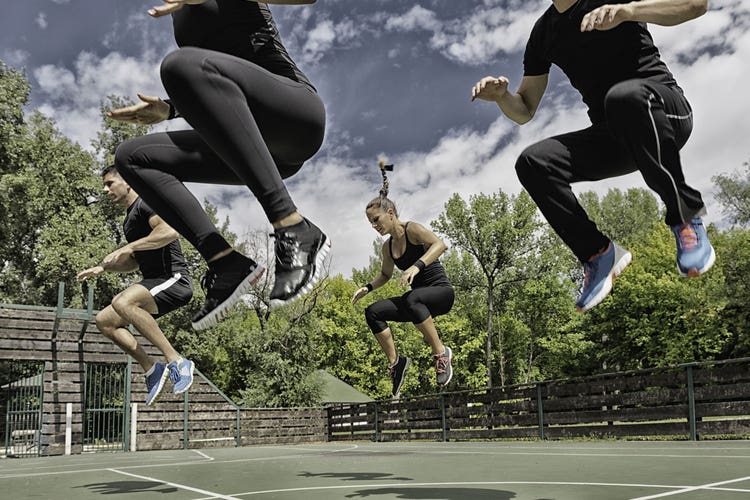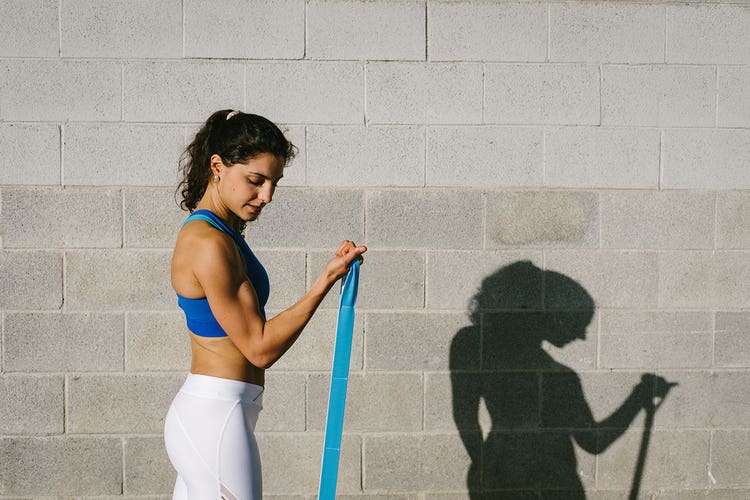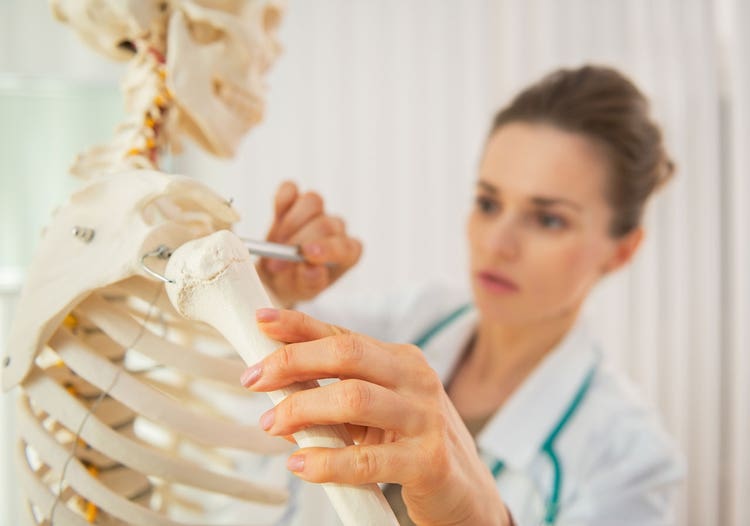Strong to the Bone—Work that skeleton for lifelong health!

We know that muscles get stronger by repairing the micro-tearing that happens during a workout. So are bones also strongest where they’ve healed from a break?
Like every other question in the field of human health, the answer is yes … and no. A broken bone heals with the formation of a “callus” at the break. Your body directs calcium to that point, but because you’re not putting that broken bone to work, the rest of that bone becomes weaker (while the bone at the break that’s healing becomes stronger).
When the cast comes off, the healed area is, in fact, stronger than the surrounding bone. But this difference is rebalanced when we return to regular activity.
Of course, unless you’re recovering from a broken bone, the idea of “building bone strength” might not occur to you. Nobody’s selling magazines with the “5 Moves for Your Sexiest Skeleton.” But bone strength is just as important as muscular or cardiovascular health. Just like muscles, our bones rely on us to keep them in good health. And as we age, skeletal health can make the difference between staying active or losing our ability to walk.
Use it or lose it

Bone is an interesting organ. As this report from the Office of the Surgeon General explains, “Bone is a composite material, consisting of … small crystals containing calcium and phosphate … bound in an orderly manner to a matrix that is made up largely of a single protein, collagen.”
The minerals make our bones strong, while the collagen matrix makes them flexible and keeps them light. Healthy bone is a dense web of minerals and collagen, whereas weak bone has a low-density web that is fragile and prone to fractures.
Bone provides structural stability for our physical shape even though it’s always changing. This happens through a process called remodeling, in which special bone cells called osteoclasts break down old bone and specialized osteoblast cells build new bone to replace it. This happens on an ongoing basis so that we have a completely new skeleton about every years!
To make sure our bones stay dense and healthy, we need to have the right balance between osteoclast and osteoblast activity. One thing that regulates this process is physical activity. According to Wolff’s law, bones will remodel along lines of force exerted on the body. Exercise stimulates bone building, while sedentary lifestyles, and even the weightlessness astronauts experience in space, stimulate bone loss called osteopenia. If bone loss becomes severe, we may end up with the weak and fragile bone that characterizes osteoporosis.
When it comes to bone health, any level of activity is better than being sedentary. But what types of exercise are best?
Jump your own bones

One fascinating thing most folks don’t know about the human body is that our bones don’t actually touch each other (as long as our joints are healthy). Instead, they’re held in place by tensegrity: a tension web of muscles, tendons, skin and other connective tissue all pulling on one another. Physical movement increases the forces pulling on our bones from within our body, particularly when we lift weight (whether we’re in the gym or rearranging the living room furniture).
For years, the standard advice has been to build bone through high-impact activities. These activities include anything during which you land with the full force of gravity on your feet—sprinting or volleyball, or moves like the tuck jump. In one study, a 16-week jump-training program showed significant bone-density increases.
But we’re learning that other types of exercise can be just as beneficial. This article from the Bone Research Group in Finland shows that multidirectional activity, also known as odd-impact loading, is just as effective for improving bone density, despite being less stressful overall for the body. Odd-impact loading includes sports like squash and soccer, as well as step aerobics. Yes, you heard that right, step aerobics workouts are fantastic for building bone density (and for busting out those leg warmers!).
Of course, high-impact anything can take a toll on our joints, so it’s important to point out that lower-impact activities are proven to help prevent bone loss, too. In the 12-year Nurses Health Study, researchers found that women who walked four hours per week (outside of work) had a 41 percent lower risk of hip fracture than those who walked less than one hour a week.
Loaded movement training is a style of exercise that combines resistance training with whole-body movements. It can be high- or low-impact, depending on the specific movement involved, but its main benefit is the ability to put the multidirectional forces into our bones that help them remodel in a more robust way. Click here for some of our favorite loaded movement drills (and a few unloaded ones) that will help your bones stay strong and beautiful for years to come!
Video credit: stockelements, Shutterstock
Photo credit: microgen, Thinkstock; CentralITAlliance, Thinkstock; Dirima, Adobe Stock